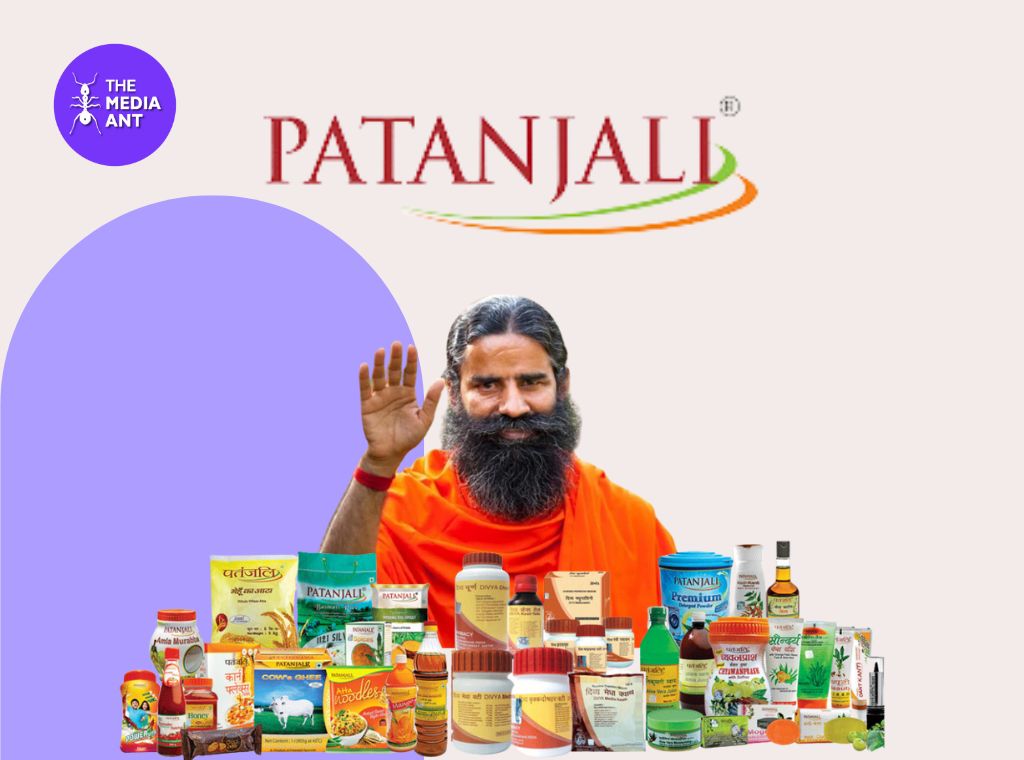Patanjali Ayurveda’s rise from a humble startup in Haridwar to a multi-billion-dollar FMCG giant is a case study in innovative marketing, smart positioning, and leveraging cultural roots. Founded in 2006 by yoga guru Baba Ramdev and Ayurvedic scholar Acharya Balkrishna, the brand has redefined the Indian consumer market by bringing Ayurveda to the forefront of modern living. This blog unpacks Patanjali’s marketing strategy, year-wise campaigns, SWOT analysis, and the key marketing concepts that have made it a household name.
The Evolution of Patanjali: A Year-Wise Analysis of Marketing Strategies
2006–2010: The Foundation Years
Vision and Launch Patanjali Ayurved was founded with the mission to revive ancient Ayurvedic wisdom and make natural products accessible to modern consumers. The brand positioned itself as a Swadeshi alternative to multinational corporations dominating the Indian FMCG market.
Marketing Approach
- Word-of-Mouth Marketing: Early promotions relied heavily on Baba Ramdev’s widespread yoga sessions and his credibility as a wellness guru.
- Product Focus: The brand initially focused on basic Ayurvedic products like herbal medicines, ghee, and honey, appealing to health-conscious consumers.
2010–2015: Expanding Reach and Building Trust
Key Milestones
- Diversification into personal care and food products.
- Establishment of Patanjali stores across India.
Marketing Strategies
- Influence of Baba Ramdev: His televised yoga sessions doubled as subtle endorsements for Patanjali products, creating demand without heavy advertising costs.
- Competitive Pricing: Products were priced significantly lower than competitors, making them attractive to cost-conscious rural and urban consumers.
- Swadeshi Narrative: The emphasis on “Made in India” products resonated strongly with patriotic consumers.
2015–2017: Disrupting the FMCG Market
The Turning Point By 2015, Patanjali reported revenues of $320 million, signaling its disruption of the FMCG sector. The brand expanded aggressively into categories like toothpaste, shampoos, and biscuits, directly competing with giants like Hindustan Unilever and Colgate.
Campaign Highlights
- Haridwar Se Har Dwar Tak: This campaign reinforced Patanjali’s mission to make Ayurveda accessible to every Indian household.
- Retail Expansion: Patanjali products were made available in supermarkets, exclusive retail stores, and e-commerce platforms like Amazon and Flipkart.
Consumer Trust
- Leveraged Baba Ramdev’s authenticity to establish an emotional connection with consumers.
- Highlighted purity, affordability, and “natural” as the core USPs.
2018–2020: Challenges and Digital Evolution
Market Challenges
- Increased competition from established FMCG brands adopting Ayurvedic product lines.
- Criticisms over product quality and sustainability practices.
Adaptation and Growth
- Digital Marketing: Patanjali embraced digital platforms to reach younger audiences. Baba Ramdev’s live yoga sessions on social media helped maintain visibility.
- Global Expansion: The brand entered international markets, including the US, UAE, and Canada.
- New Product Launches: Introduced innovative categories like Patanjali Nutrela for health-conscious consumers.
2021–2023: Post-Pandemic Resilience
Pandemic Shift The COVID-19 pandemic emphasized health and wellness, aligning perfectly with Patanjali’s product offerings.
Key Strategies
- #SwadeshiKaSwabhiman: Focused on promoting a sustainable, eco-friendly, and Indian lifestyle.
- Diversification: Launched Patanjali Paridhan (clothing) and eco-friendly household products.
- E-commerce Optimization: Strengthened online presence through platforms and own e-store.
SWOT Analysis of Patanjali
Strengths
- Strong Brand Identity: Deep-rooted in Indian culture and Ayurveda.
- Wide Product Range: From food to personal care, offering products for diverse needs.
- Cost Leadership: Competitive pricing strategy attracts price-sensitive consumers.
- Charismatic Leadership: Baba Ramdev’s influence ensures trust and loyalty.
Weaknesses
- Quality Concerns: Allegations of substandard products have affected credibility.
- Overdependence on Baba Ramdev: Reliance on a single brand ambassador limits flexibility.
- Limited Urban Appeal: Struggles to attract premium, urban consumers.
Opportunities
- Global Ayurveda Market: Rising global demand for natural and Ayurvedic products.
- Health and Wellness Trends: Post-pandemic focus on immunity and health.
- Digital Transformation: Expanding e-commerce and AI-driven personalization.
Threats
- Intense Competition: Established players like Dabur, Hindustan Unilever, and ITC expanding Ayurvedic portfolios.
- Regulatory Scrutiny: Compliance with health and safety standards.
- Consumer Awareness: Increasing demand for transparency in sourcing and manufacturing.
The 4Ps of Patanjali’s Marketing Mix
Product
- Focus on Ayurvedic and natural ingredients.
- Wide product range, including food, beverages, personal care, and healthcare.
- Innovations like eco-friendly cleaners and immunity boosters.
Price
- Cost-effective pricing strategy to penetrate rural and urban markets.
- Competitive pricing ensures affordability without compromising quality.
Place
- Extensive distribution network, including 1,900+ exclusive outlets.
- Availability in supermarkets, e-commerce platforms, and local stores.
- Exporting to international markets.
Promotion
- Minimal advertising costs due to Baba Ramdev’s endorsements.
- Digital campaigns, live yoga sessions, and influencer collaborations.
- Patriotic and Swadeshi messaging as key emotional appeals.
Key Takeaways from Patanjali’s Marketing Strategy
- Cultural Resonance: Aligning products with Indian traditions and values creates emotional connections with consumers.
- Trust and Authenticity: Leveraging a credible and charismatic leader can build consumer trust and loyalty.
- Disruption through Affordability: Competitive pricing and accessible distribution channels can disrupt even established markets.
- Adaptability: Evolving with consumer trends, such as health consciousness and digital engagement, is crucial for sustained growth.
- Purpose-Driven Branding: Positioning as a “Swadeshi” brand with a mission beyond profits sets Patanjali apart from competitors.
The Road Ahead for Patanjali
As Patanjali continues to grow, the focus will likely be on:
- Strengthening global presence through innovative product lines.
- Enhancing product quality and addressing sustainability concerns.
- Expanding digital marketing efforts to capture tech-savvy consumers.
- Balancing its traditional Ayurvedic roots with modern wellness trends.
Patanjali’s journey is a testament to the power of blending cultural authenticity with innovative marketing. By staying true to its core values while adapting to changing consumer preferences, the brand has carved a niche that few can rival in the FMCG sector.





